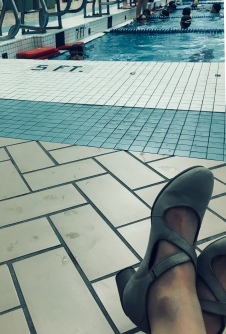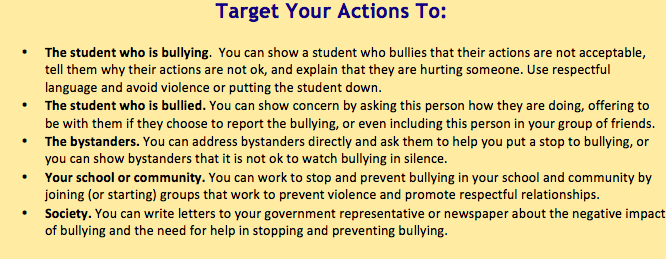 Throwback to yesterday- I prepped some slides for a big talk later this week, finished a few time sensitive tasks related to patient care, made it through a couple of high level meetings, and then rushed off to relieve a sick babysitter. That’s how I ended up sitting poolside in a blazer and heels, with the amazing bonus of getting to watch this guy swim some laps (which rarely happens).
Throwback to yesterday- I prepped some slides for a big talk later this week, finished a few time sensitive tasks related to patient care, made it through a couple of high level meetings, and then rushed off to relieve a sick babysitter. That’s how I ended up sitting poolside in a blazer and heels, with the amazing bonus of getting to watch this guy swim some laps (which rarely happens).
There’s a conversation happening over at #doctorsofinstagram about having it all and whether that’s even possible. Here’s my take, formed by more than 10 years in full-time practice and 8 precious years as a mom, but still a serious work in progress:
First, each of us can only define what it means to have it all for ourselves. Working full time and not having kids might be having it all for one person, staying at home with kids and not working might be having it all for another. And everything in between. It’s all okay. We define happiness and life goals for ourselves.
Second, I think you can have it all (defined for me personally as having both a successful career and a fulfilling life with family outside work), but I don’t think you can have it all in every part of your life all at the same time. What I mean is this- if you see me being successful at work, I am probably missing something at home. If I’m having a great day as a mom, which I loosely define as spending quality time with my son, I probably have open clinic charts that are waiting for my attention. There are hours, days, months, years, when I need to lean in at home and others that I lean in to work. And, that’s okay. Shonda Rhimes writes eloquently about this in her great book, “The Year of Yes”.
Third, I’m at the point where instead of aiming to have it all, most days my goal is to simply have it together. For me, the term “having it all” suggests we should try to “be it all” and do it all perfectly. This sets working parents in particular up for an unattainable goal and feelings of overwhelm. Instead, increasingly my aim is to try to do my best with everything on my plate, and make peace with all of the times that things don’t go exactly as planned (which occurs pretty much daily). And it’s only over the last couple of years that I’ve gotten back to any semblance of a fitness routine and some time for self-care without feeling guilty. This is after repeated readings of “The Gifts of Imperfection” by Brene Brown (if you think at all about these kinds of things, please go read ALL of her books right now :))
Finally, I’ll say this- anyone who looks like they have it all probably has a lot of help. I only survive (and sometimes thrive) because I have an amazing team of people both at work and at home who I partner with to keep it all running and I’m extremely privileged to have them in my life.
What does having it all or living your best life mean to you?
The Upstander: How They Stand Up to Bullying
The following post was written by guest author, Dr. Shelagh Dunn.
Although I didn’t know it at the time, I’m pretty sure I chose the research topic of my doctoral dissertation for personal reasons. I studied upstanders to bullying by interviewing middle school students who stood up to bullying in their schools. I thought I might someday be helping teachers and schools to lessen bullying. But it turns out that the students I was studying were my teachers. I learned so much about how to be an effective citizen and a decent human being from these student upstanders. You see, I used to see violence in the news and feel horror and pain but not know what to do about it. These students knew these feelings too but they also possessed a wisdom and resolve that I’m still only learning about. I’d like to share some of what I’ve learned with you. We need their knowledge now more than ever.
Why am I talking about bullying right now? Well, it’s common to think of bullying in schools as “kids being kids” or to say “kids can be so cruel” and dismiss the cruelty of bullying as something that children grow out of. I don’t see it this way at all. What I’ve come to learn is that bullying is a microcosm of our society. Children are using their eyes and ears to absorb the world around them and they act it out with one another at school. It is not surprising to hear that right now there are increasing reports of bullying in schools targeting race, faith, and gender, when these very things are being targeted by politicians in the media.
But here’s the thing, stopping bullying is hard, in part because being an upstander is hard. As adults, we do not have this figured out. Most of us don’t know what to do when we witness violence, discrimination or hate, and even if we know what to do, we sometimes don’t do it. In the 1950’s a psychologist named Asch found that when a person is shown lines of obviously different lengths and asked to tell which line is the shortest, they can easily do so… unless they are in a room of people purposefully giving the wrong answer. In these cases, most people will give in and give the same answer as the group even when they know it is wrong. It’s just too hard to be the only one in a group saying something different. There is also another phenomenon acting against us called the “bystander effect” which shows that people will not come to the aid of someone in need as often if there are others around, because we believe that someone else will help. All of this means that there are incredible social forces acting on us to prevent us from intervening when we witness something like bullying, discrimination, or hate-fuelled behavior. We don’t want to be different, we think someone else will do it. Add in the threat of social and physical harm that can come with taking this stuff on and it becomes a very special and unique quality to be an upstander.
So how are some people able to be upstanders? Here’s what the students I interviewed had to say. They all told me that they had been bullied themselves at least once before and had a strong sense of empathy for others being bullied. They all told me that they knew bullying was wrong and they had to do something about it. They all told me that they didn’t care so much about what other students thought of them, they were not afraid to be different. Most of them used specific tactics to intervene using the means that they had available. Most of them took on what I realized was the identity of an upstander – it wasn’t just something they did, it was something they were. It became a part of their moral character to do the right thing even when it’s hard.
We can learn to adopt these qualities and teach them to our kids. Empathy. Resolve. Being unafraid to be different. There are strategies and places to start. As we practice using our empathy, using our voice, and listening to our own sense of right and wrong, even when everyone else around us is silent, here are a very specific set of instructions from these students to their peers and teachers, reprinted here for you to think about.

If you think these instructions might help a school deal with bullying, please try them out. But here is my real challenge to you. If bullying is the microcosm, then we adults live in the macrocosm. Look at the list of actions above. Pick one. Do it today. Sleep. Repeat. Your children are watching.
“In the end, we will remember not the words of our enemies but the silence of our friends.” – Dr. Martin Luther King Jr.
Dr. Shelagh Dunn is a Registered Psychologist in Edmonton, Alberta, Canada. She has a private practice in counselling psychology, with an interest in positive psychology and the health benefits of creating social change.
Healthy, Kid-Approved Meals and Snacks
 We do a fairly good job of eating healthy at our house, particularly for dinner, but we have recently been in a rut with healthy options that my 6-year-old will actually eat for breakfast, lunch, and after school snacks. He’s also at the age where he likes to get involved in food choices and (occasionally) food preparation.
We do a fairly good job of eating healthy at our house, particularly for dinner, but we have recently been in a rut with healthy options that my 6-year-old will actually eat for breakfast, lunch, and after school snacks. He’s also at the age where he likes to get involved in food choices and (occasionally) food preparation.
So, to mix things up a bit I crowd-sourced for new ideas this week (and boy did folks come through with some great ideas)! My plan for 2017 is to have this chart up on the fridge and involve my son in meal planning. Each Saturday before grocery shopping he can pick two items from each category and I’ll make sure we have the ingredients on hand for the following week. During my usual Sunday meal prep, I’m going to try to involve him in getting his own BF/lunch/snacks ready for the week.
Additional helpful resources:
This is a living document so if you have more ideas or helpful resources, please share in the comments. The first PDF includes our ideas, the second is left blank for your family’s imagination. I’ll let you know how it goes!
Kid-Approved Breakfast, Lunch, and Snacks PDF: kidapprovedbls
Kid-Approved Breakfast, Lunch, and Snacks (blank) PDF: blankbls
Vulnerable
It’s when I’m putting my son to bed at night that I feel it most acutely. Smelling his hair. Watching him breathe. It overwhelms me. There’s a name for what I’m feeling. Vulnerable.
Absolute and total vulnerability. Vulnerability that comes from a love so profound it cannot be described. I think, no one told me about this part of parenting. But then I think that even if they had I wouldn’t have understood. Heart on my sleeve isn’t the half of it. Continue reading
How Can Parents Make Time For Exercise?
I’ve been thinking a lot about parenting and self-care. Mostly about how, when things get busy, our self-care is often the first thing to go. This, despite evidence and anecdote that it really shouldn’t be. That taking care of ourselves actually makes us better parents. Continue reading
Playground Politics
 Recently, my son encountered his first playground politics. Continue reading
Recently, my son encountered his first playground politics. Continue reading
In Defense of Two-Year-Olds: Why The Twos Are Not So Terrible
 People often ask how old my son is when we are out and about. When he proudly says, “Two!”, the most common response is a smile to him. . . and a knowing glance to me. This is often accompanied by, “Oooh, the terrible twos!”
People often ask how old my son is when we are out and about. When he proudly says, “Two!”, the most common response is a smile to him. . . and a knowing glance to me. This is often accompanied by, “Oooh, the terrible twos!”
I’m here today to stand in the defense of two-year-olds. Sure, they have their share of tantrums and the transition from infant to preschooler is sometimes a bumpy ride. But, it is also amazing. Two-year-olds are pretty darn cool. Here’s why. Continue reading
Am I Really Busy. . . or Does It Just Feel That Way?
Any way you cut it, life as a parent is busy. Or, at least it feels that way. Some days I’m filled with a feeling that most parents have had to varying degrees at different times. There are not enough hours in the day. Weeks and months fly by. To-do lists grow longer. I’m one skipped nap away from chaos. I feel busy.
But a recent New York Times article reminded me that most of us who feel busy actually choose to be so. Continue reading
Let’s Potty!
 So, the time is approaching. The time I’ve been dreading a bit. The one developmental milestone, that, for some reason, I was kind of hoping my son would reach later rather than earlier. It is almost time for toilet training. How do I know? Well, the little guy routinely sits on his little potty for a few minutes before bathtime. We read some books, chat, and that is that. But, lately, these nightly sits on the potty have occasionally become, shall we say, productive.
So, the time is approaching. The time I’ve been dreading a bit. The one developmental milestone, that, for some reason, I was kind of hoping my son would reach later rather than earlier. It is almost time for toilet training. How do I know? Well, the little guy routinely sits on his little potty for a few minutes before bathtime. We read some books, chat, and that is that. But, lately, these nightly sits on the potty have occasionally become, shall we say, productive.
The “app gap”: How parents obtain health information
 The number of educational topics a pediatrician is trained to cover in a standard well child visit is a bit overwhelming. Each topic could (and does) fill books. A 2006 study published in Pediatrics found that there are 162 different verbal health advice directives that pediatricians are told to cover with each patient over time. These important topics range from injury prevention to nutrition to sexual health to literacy promotion. But, as the authors of the study point out, not only is there little time to cover these topics, there is scant evidence to suggest whether or not talking about these topics with families is actually effective. It is often difficult to know exactly what to prioritize for discussion in a short clinic visit. In order to ameliorate our own anxiety that we didn’t have time for everything, many pediatricians provide educational handouts. But, does anyone read them? What’s more, are they written in the language the parent speaks, at a level they can understand?
The number of educational topics a pediatrician is trained to cover in a standard well child visit is a bit overwhelming. Each topic could (and does) fill books. A 2006 study published in Pediatrics found that there are 162 different verbal health advice directives that pediatricians are told to cover with each patient over time. These important topics range from injury prevention to nutrition to sexual health to literacy promotion. But, as the authors of the study point out, not only is there little time to cover these topics, there is scant evidence to suggest whether or not talking about these topics with families is actually effective. It is often difficult to know exactly what to prioritize for discussion in a short clinic visit. In order to ameliorate our own anxiety that we didn’t have time for everything, many pediatricians provide educational handouts. But, does anyone read them? What’s more, are they written in the language the parent speaks, at a level they can understand?
